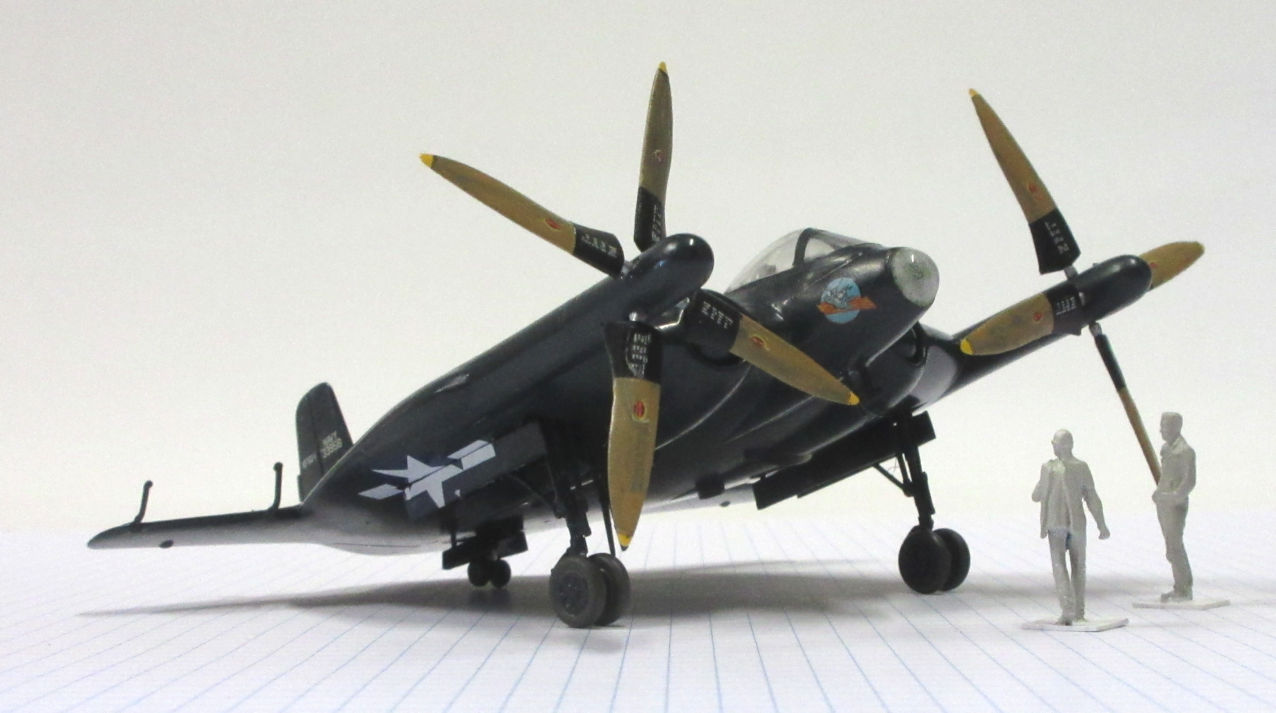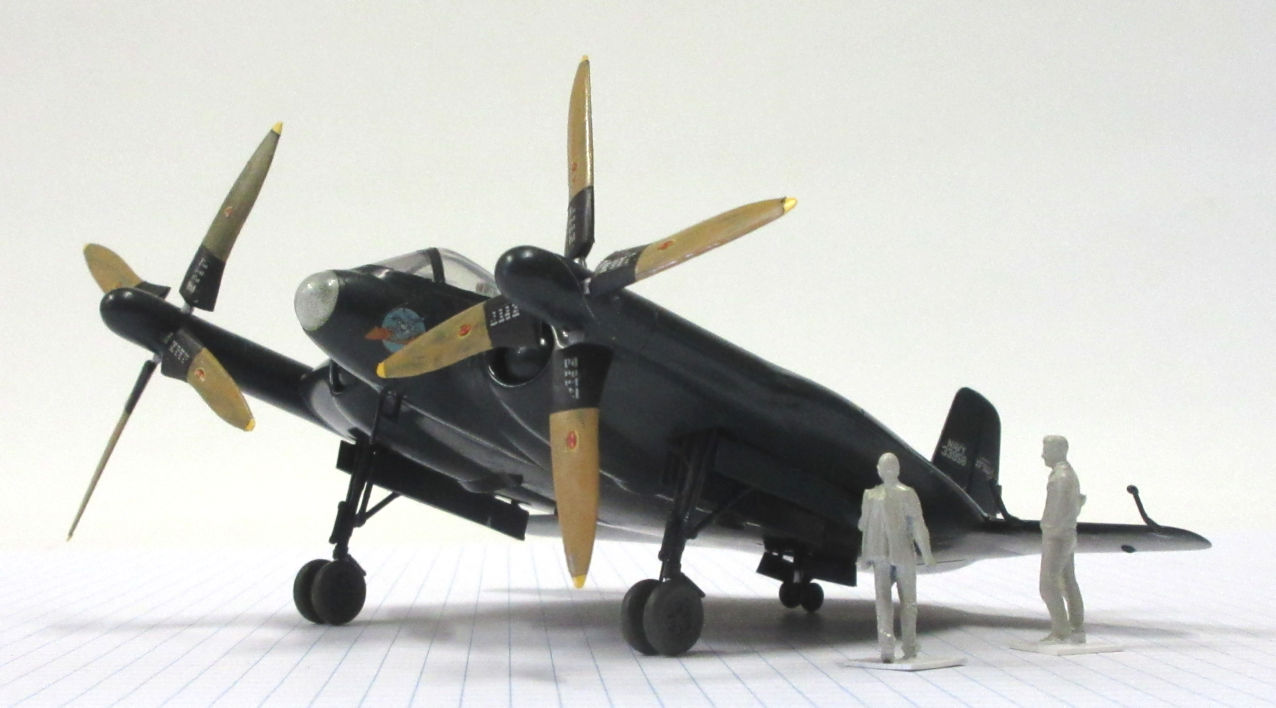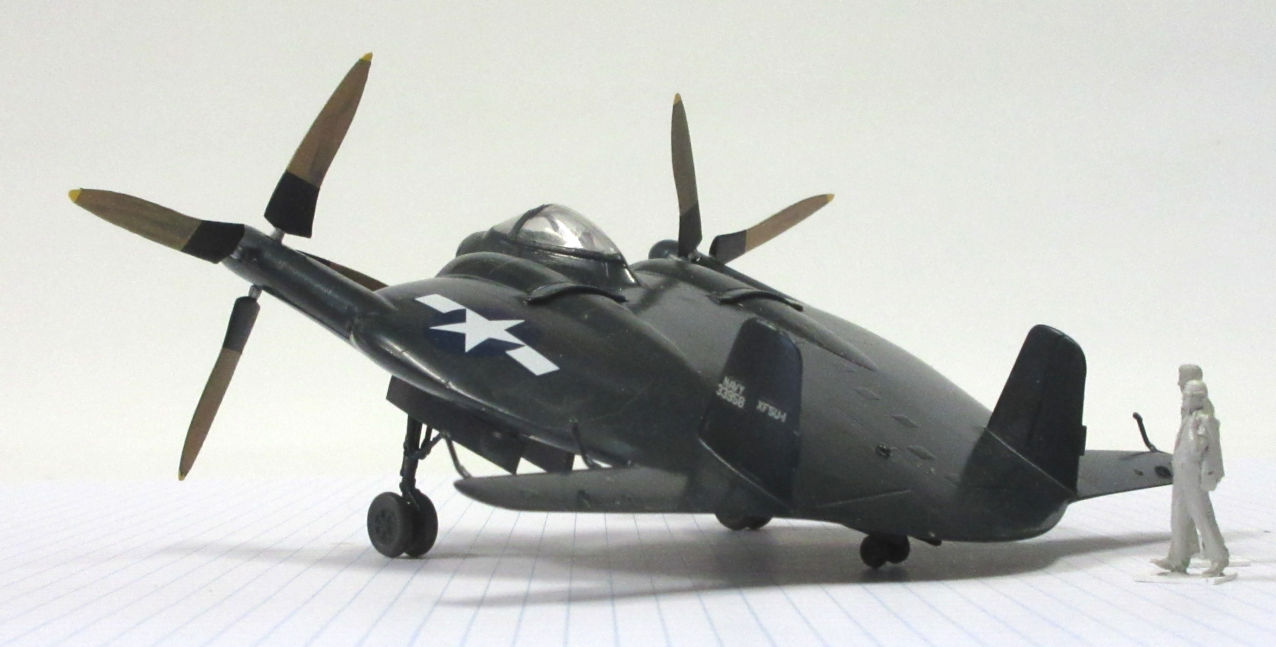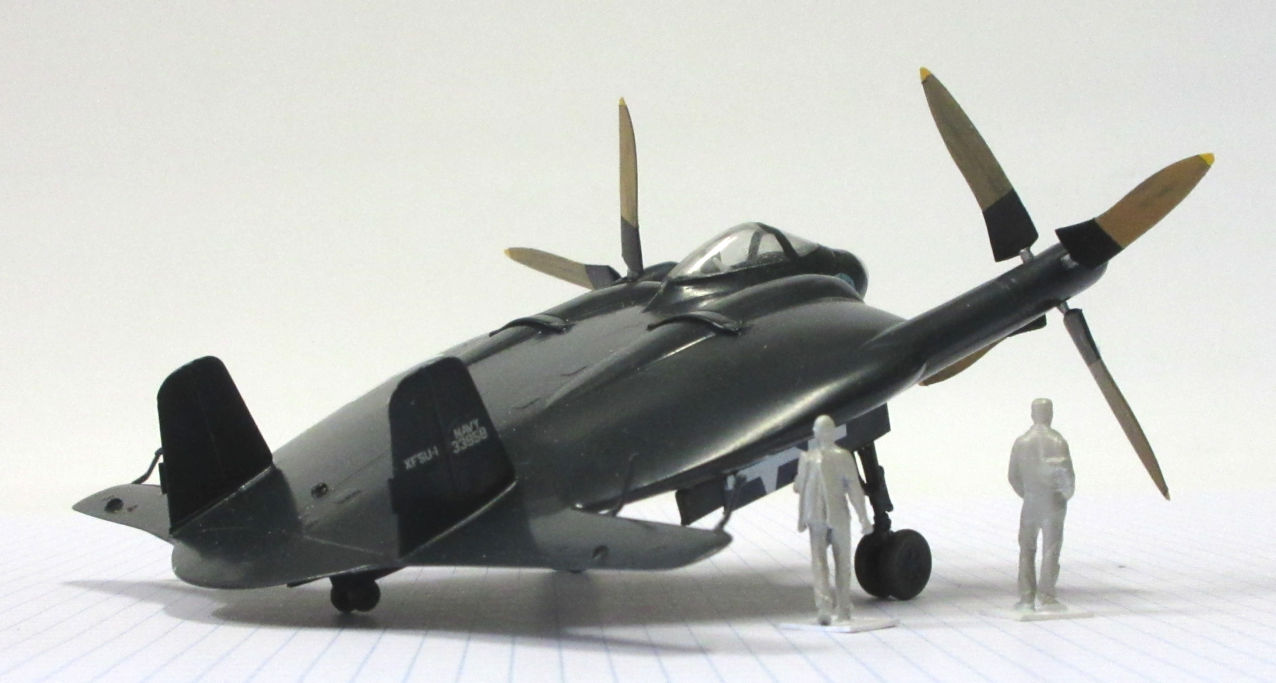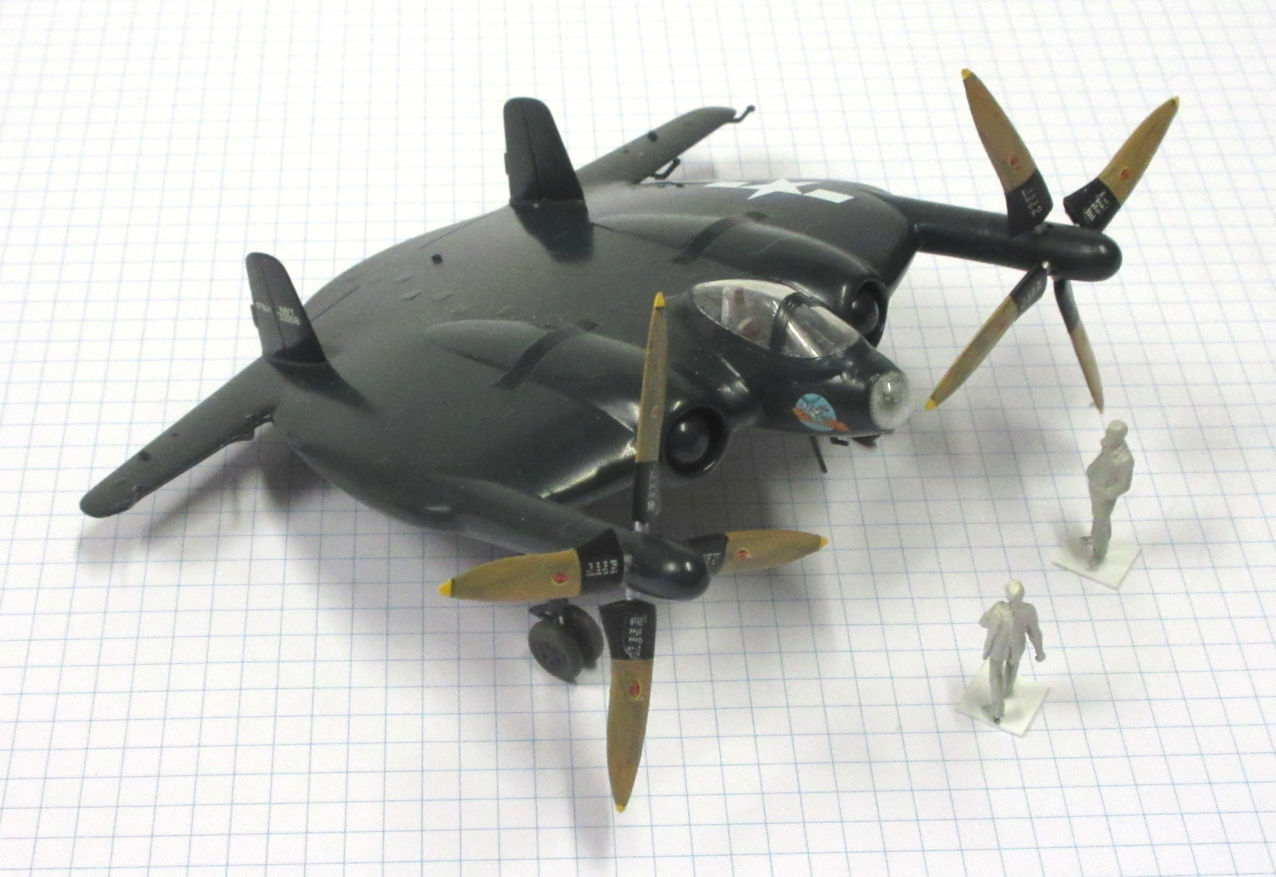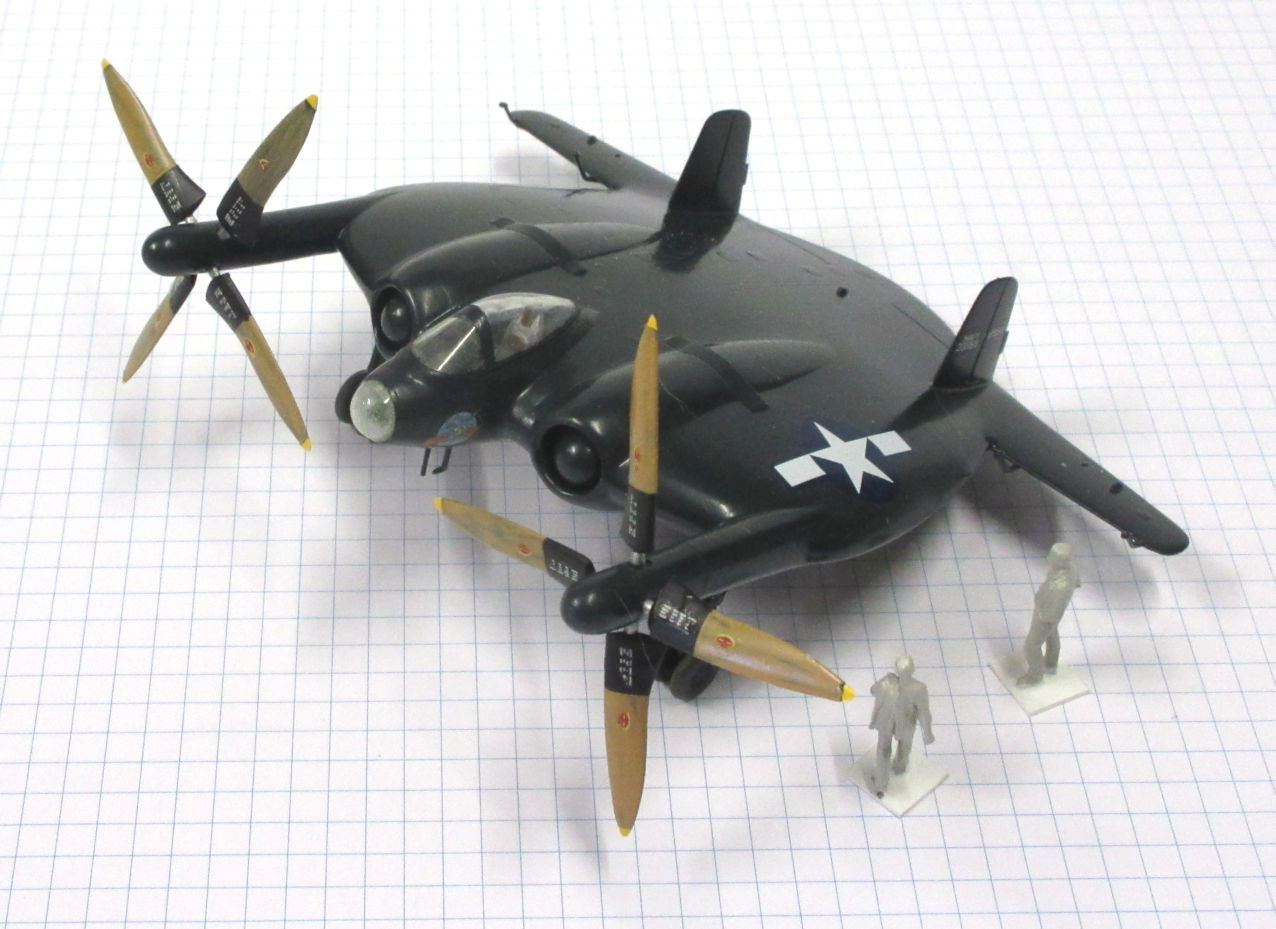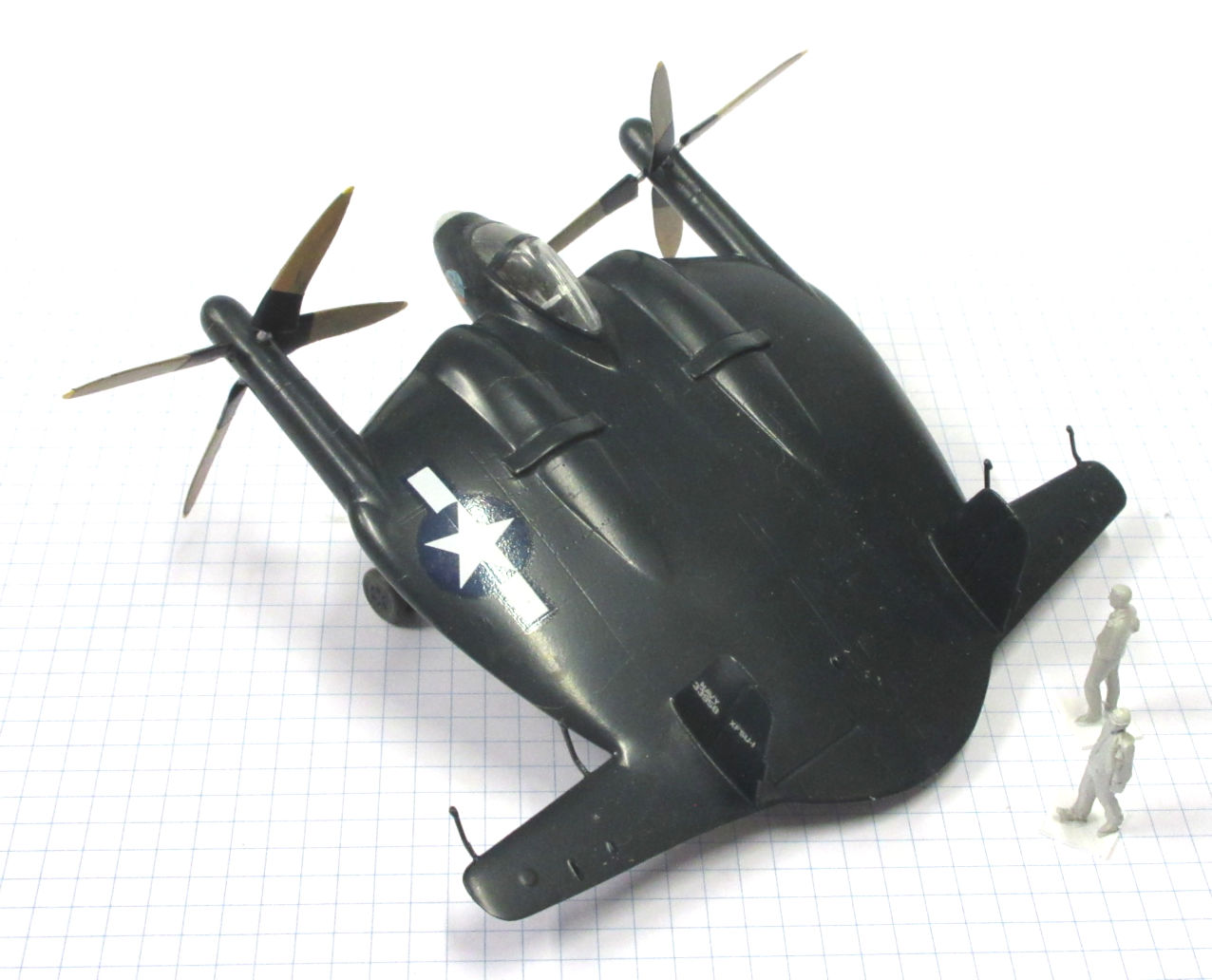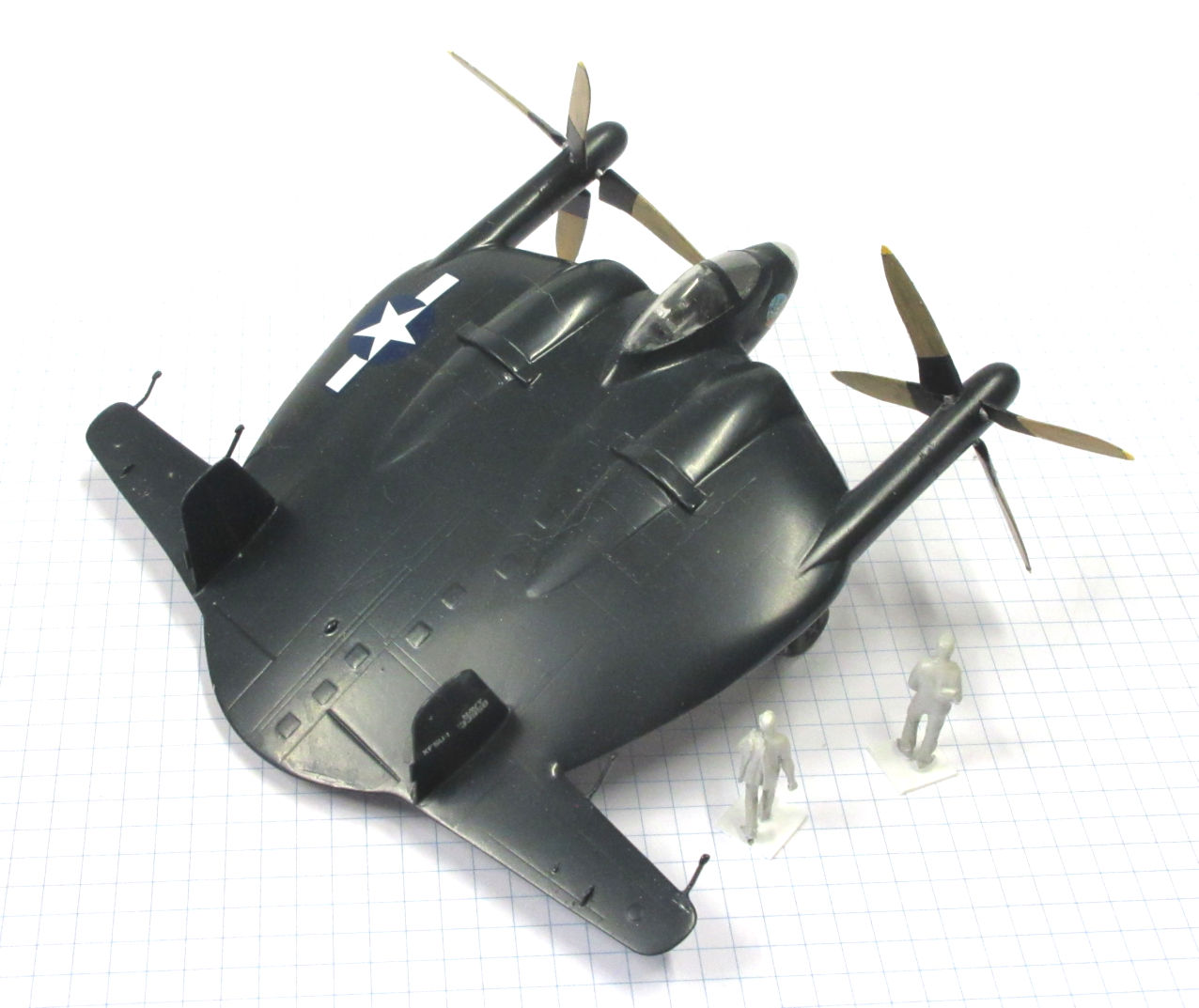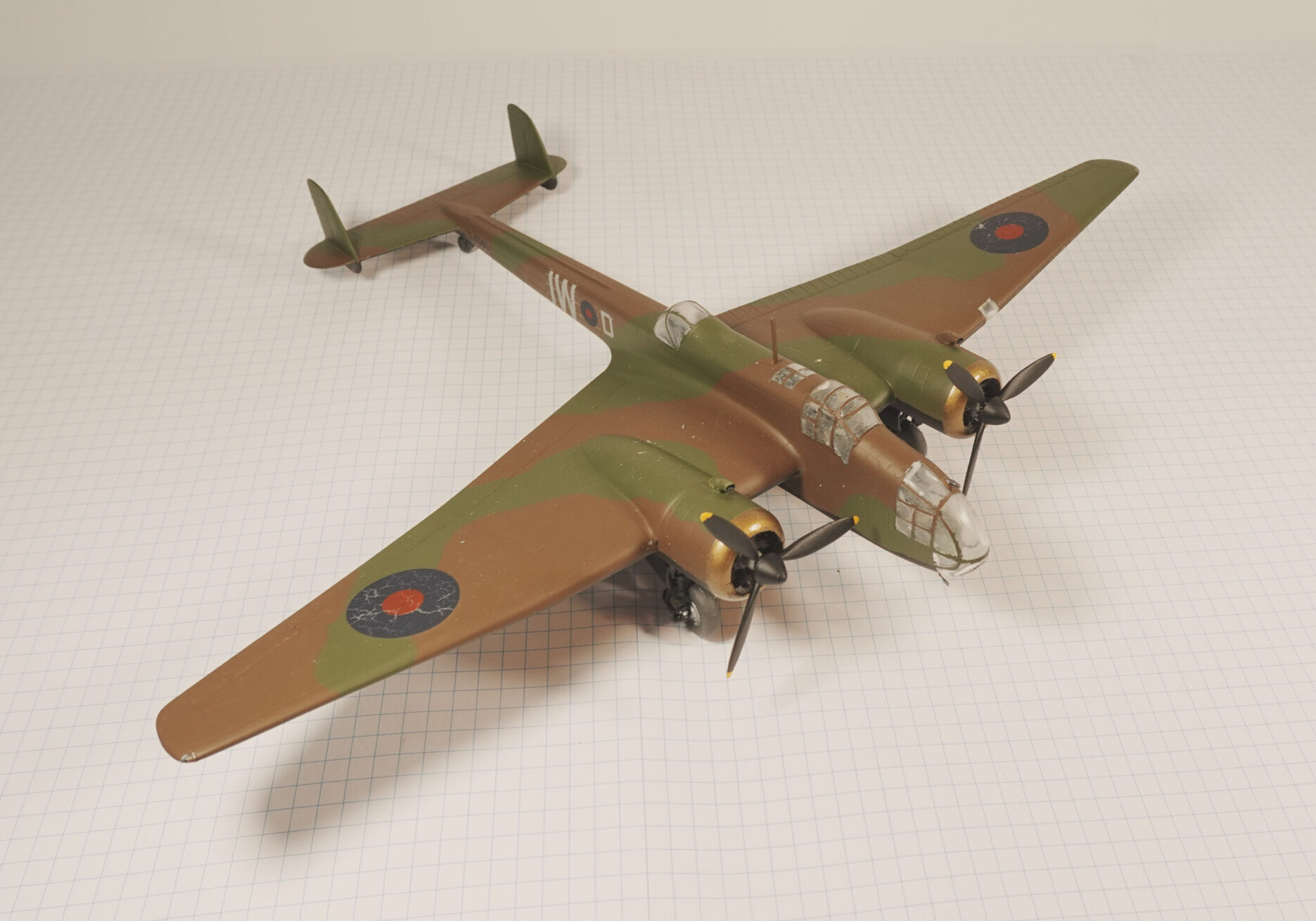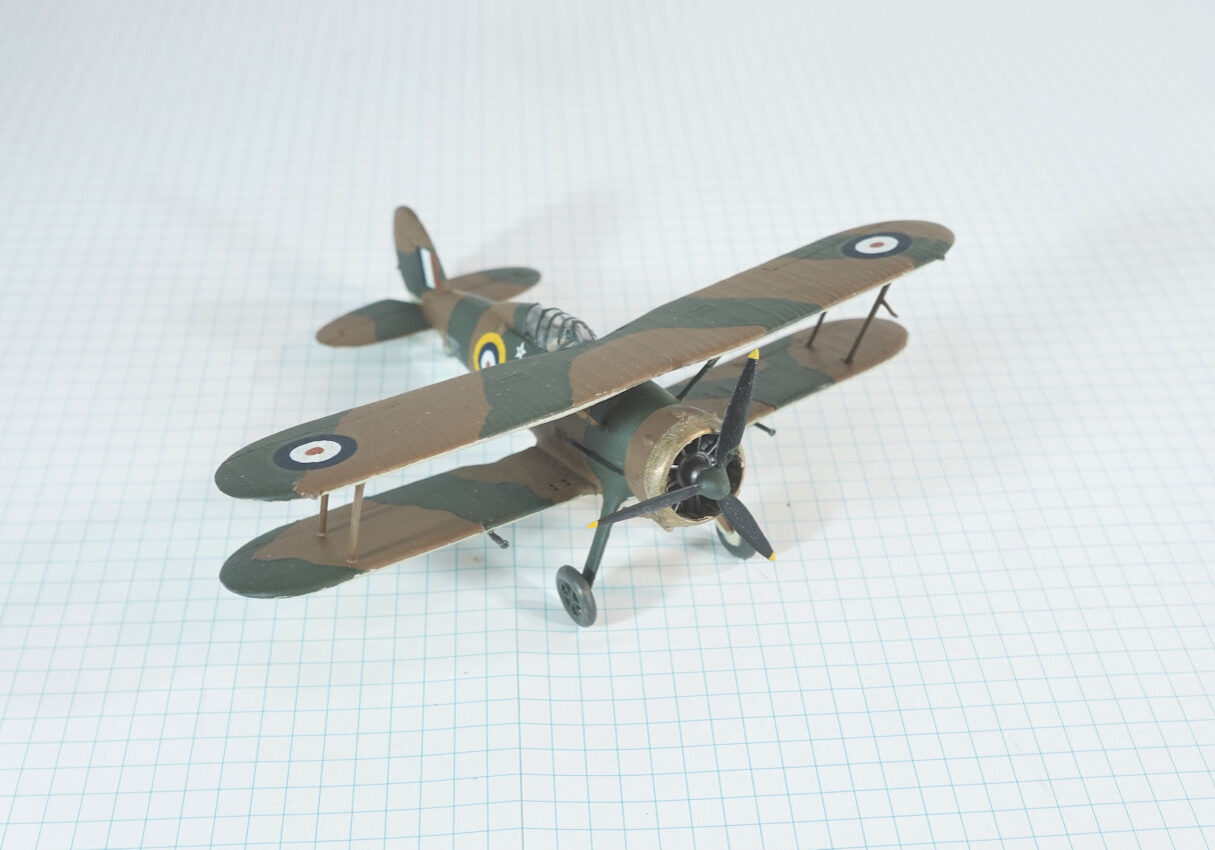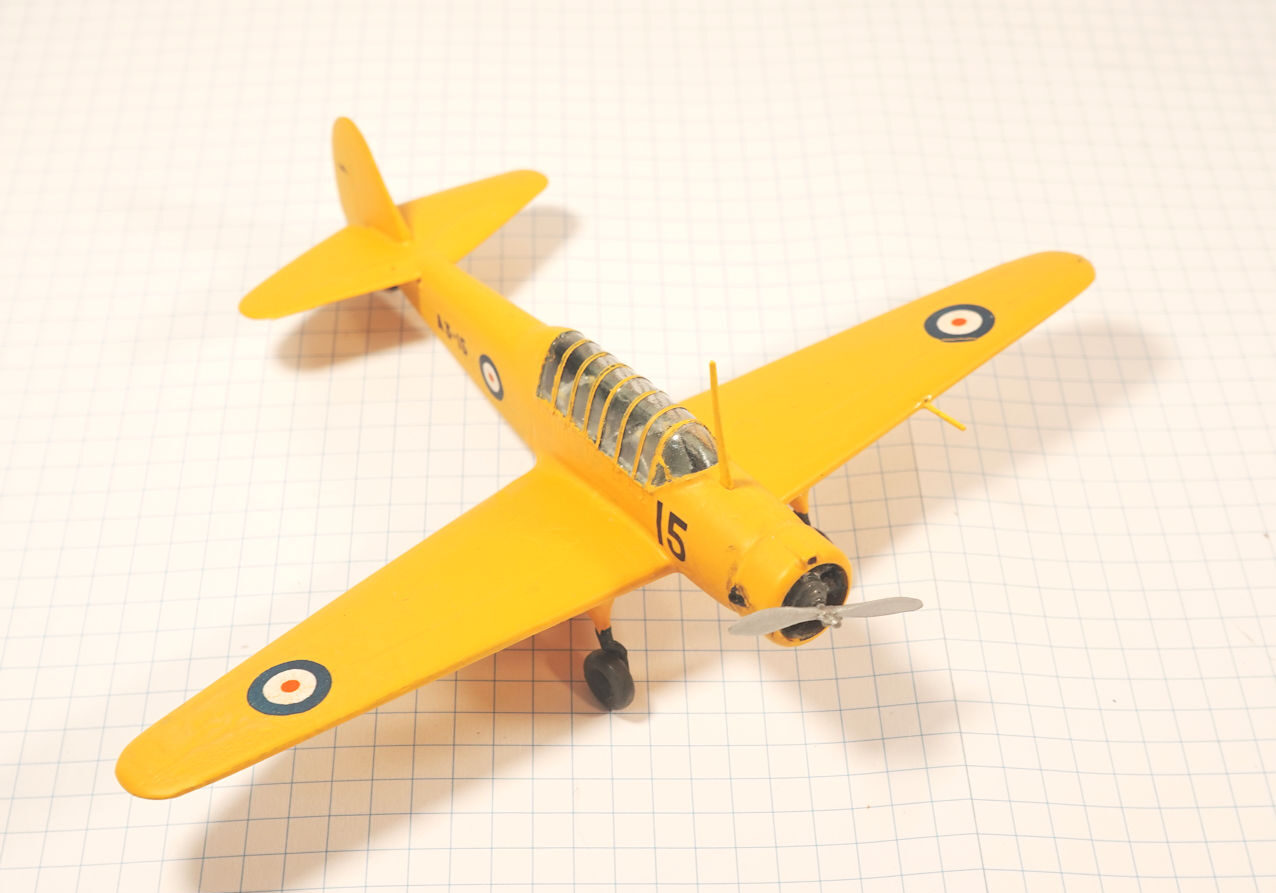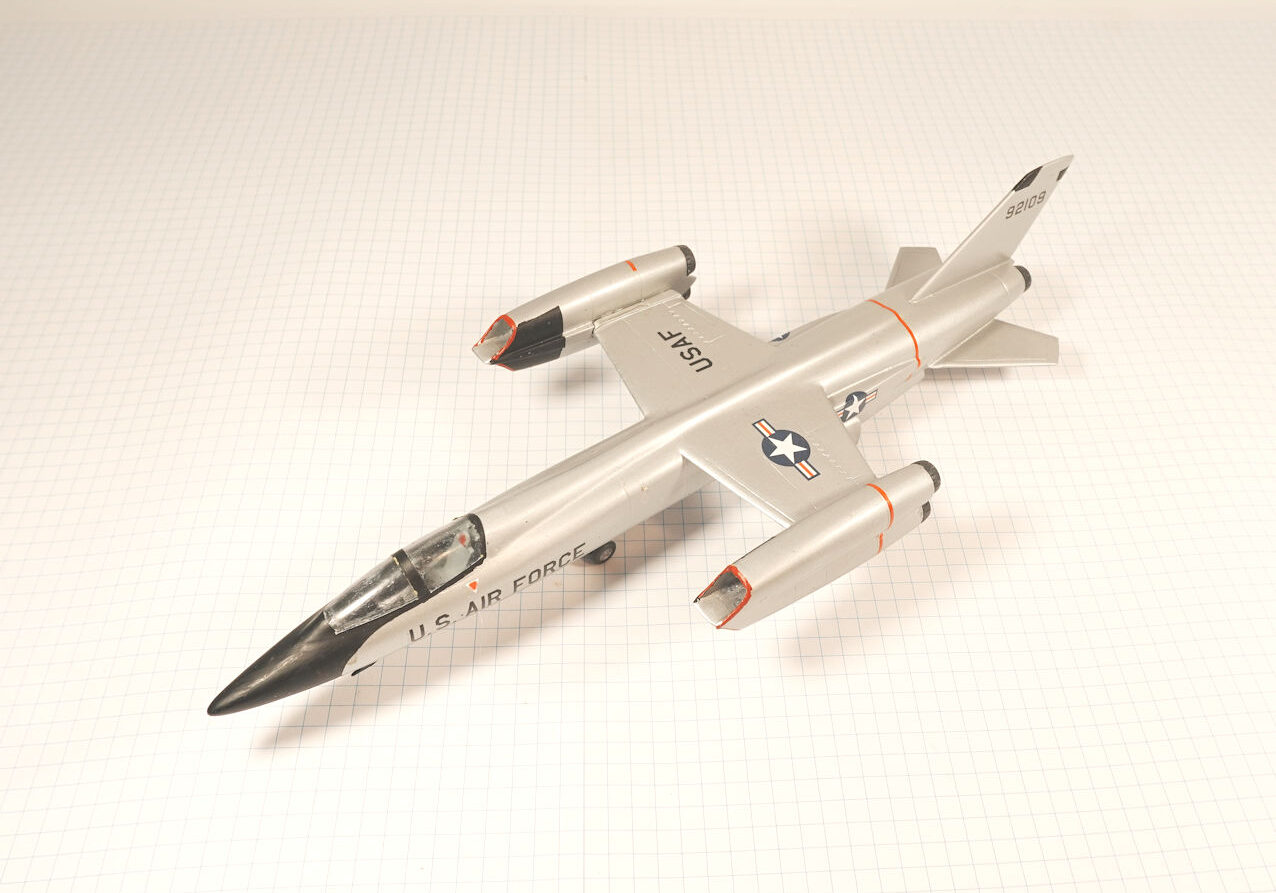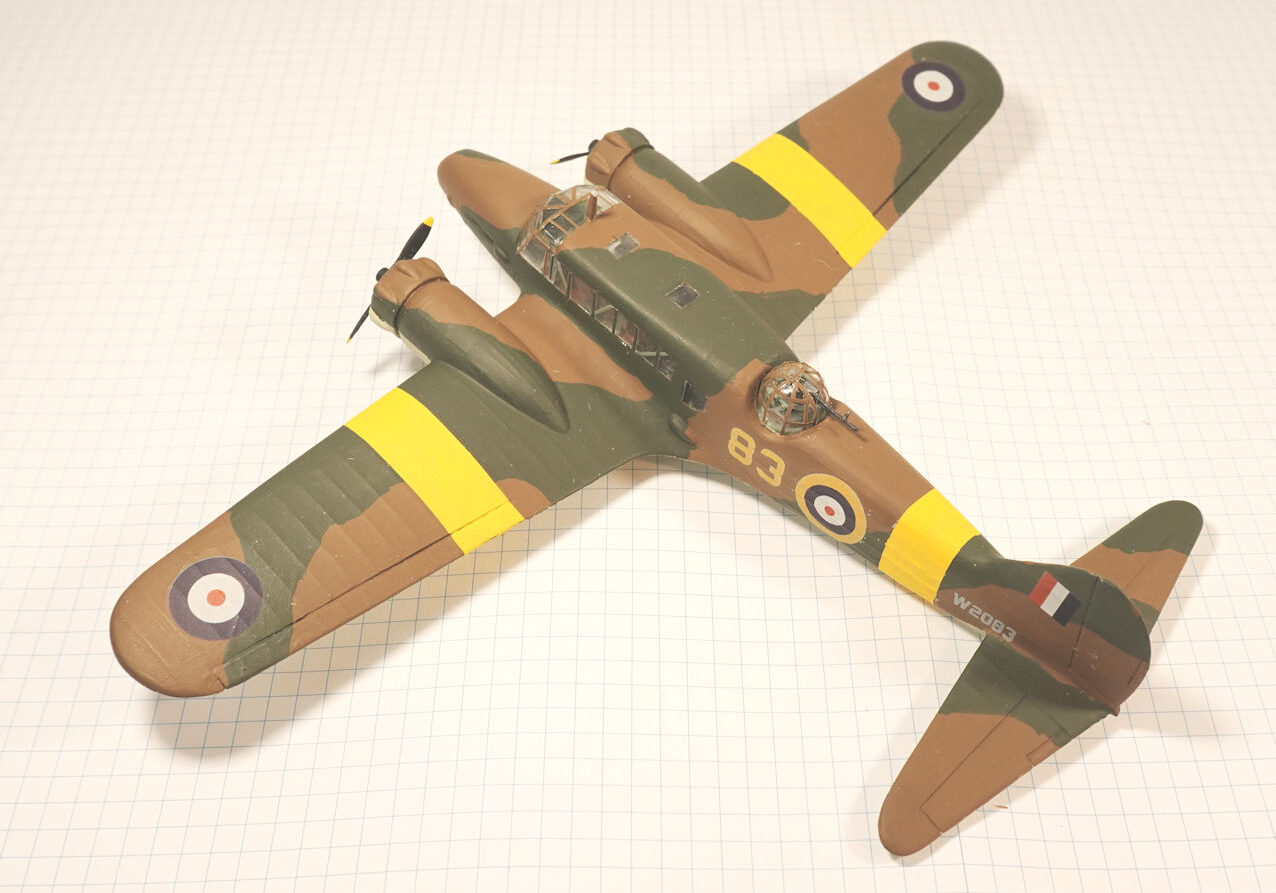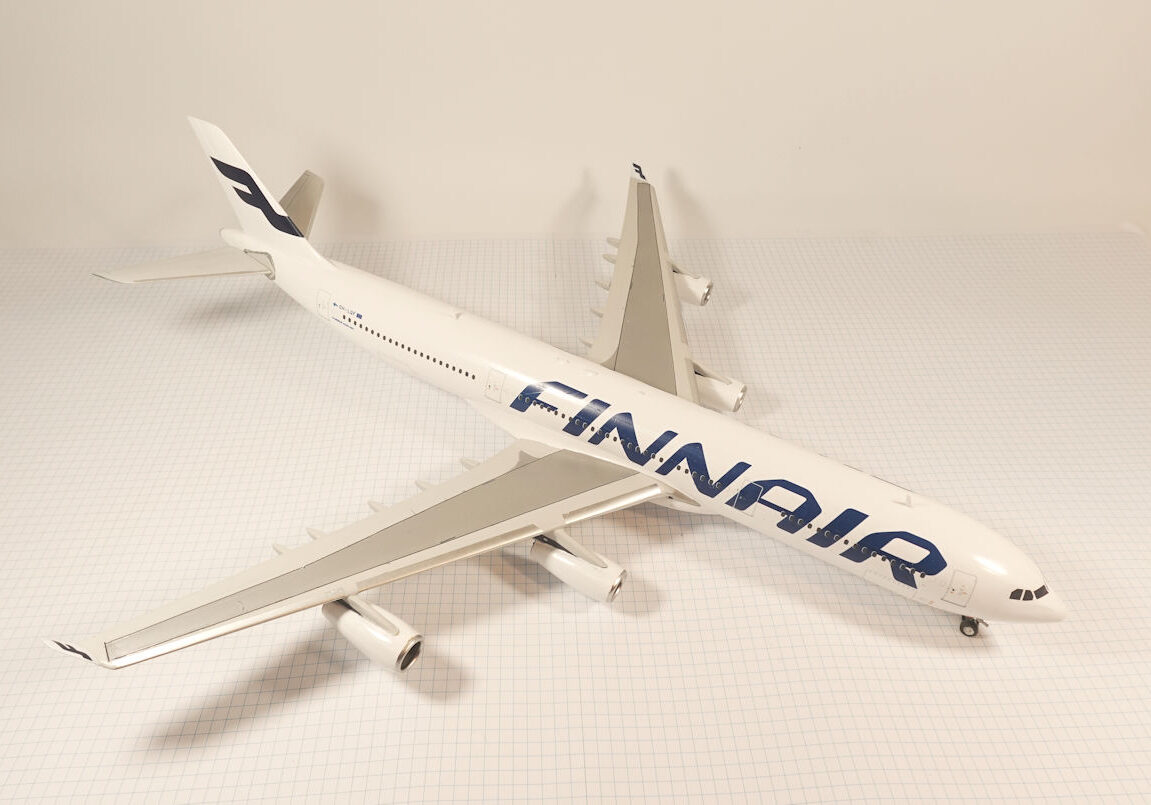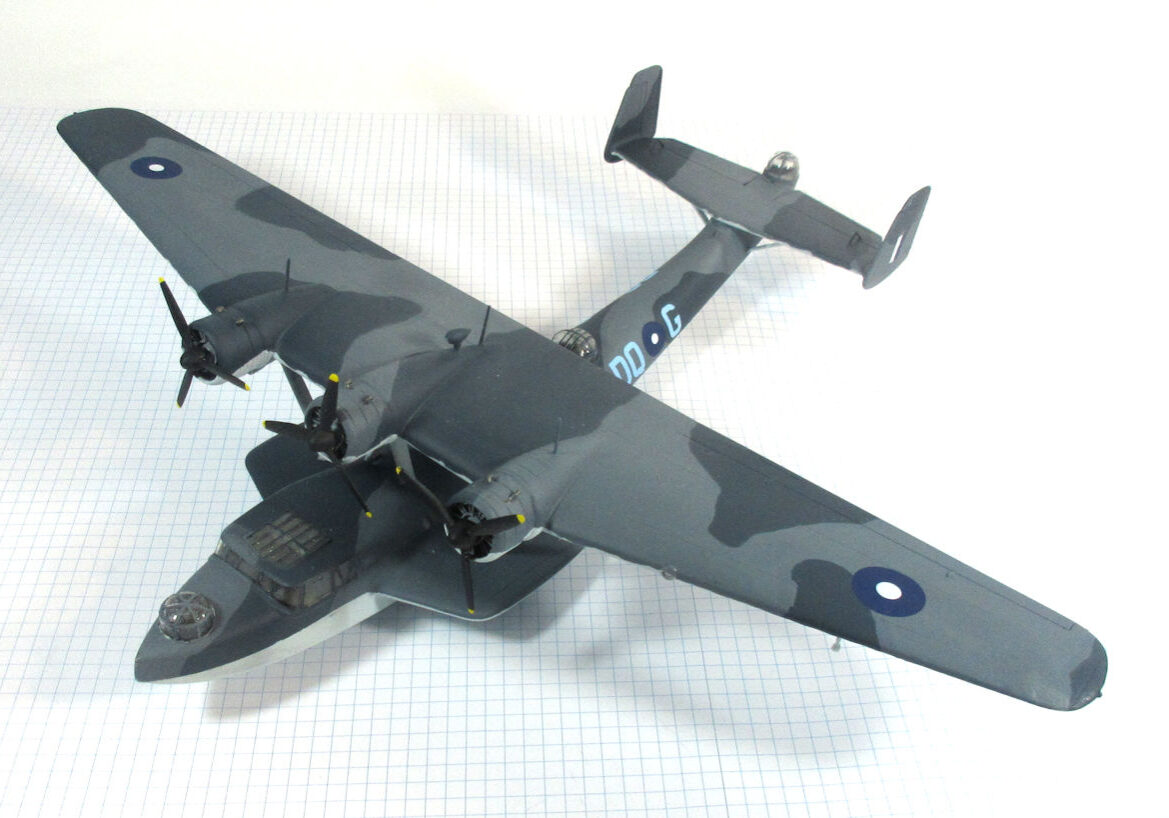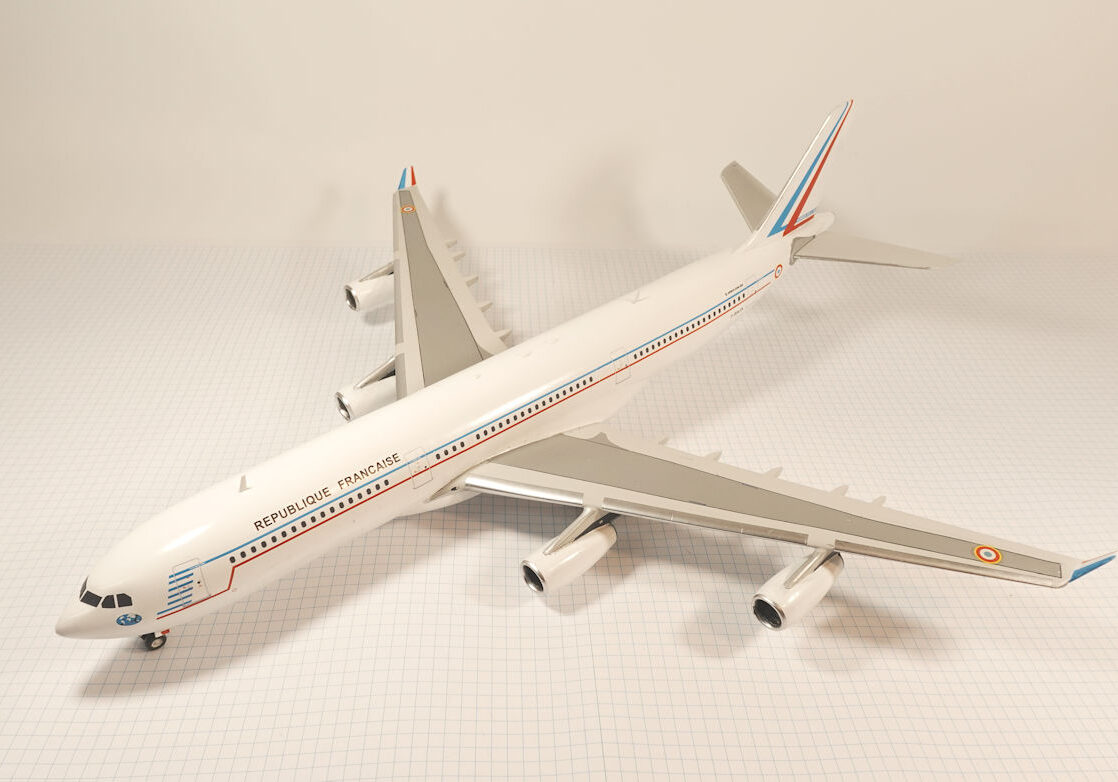History
The Vought XF5U was a revolutionary aeroplane design developed during World War II that had the potential to bring new levels of performance to piston engined fighters. It was, however, overtaken by the arrival of jet engines.
The XF5U design dated from the early 1930s when Charles Zimmerman won an award with a disc-shaped concept capable of flying at high speed or hovering.
The idea was considered too advanced and not developed until Zimmerman joined Vought in 1937.
A test aeroplane, the V-173 first flew on 23 November 1942 and the US Navy ordered development of it and the XF5U in July 1944.
The prototype XF5U was rolled out in 1946 but suffered delays through a lack of satisfactory propellers.
The Navy cancelled the project in March 1947, preferring jet aircraft, and the prototype was destroyed without having flown
This model represents the only XF5U made.
Hasegawa 1/72 kit completed by Leigh Edmonds in December 2020.
